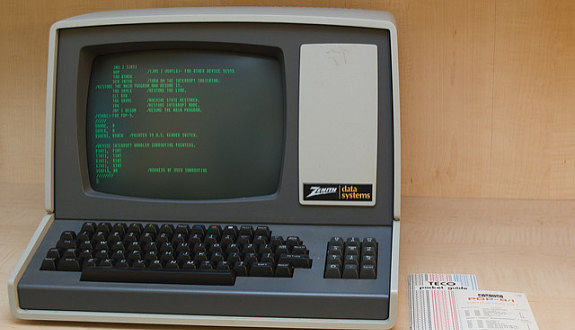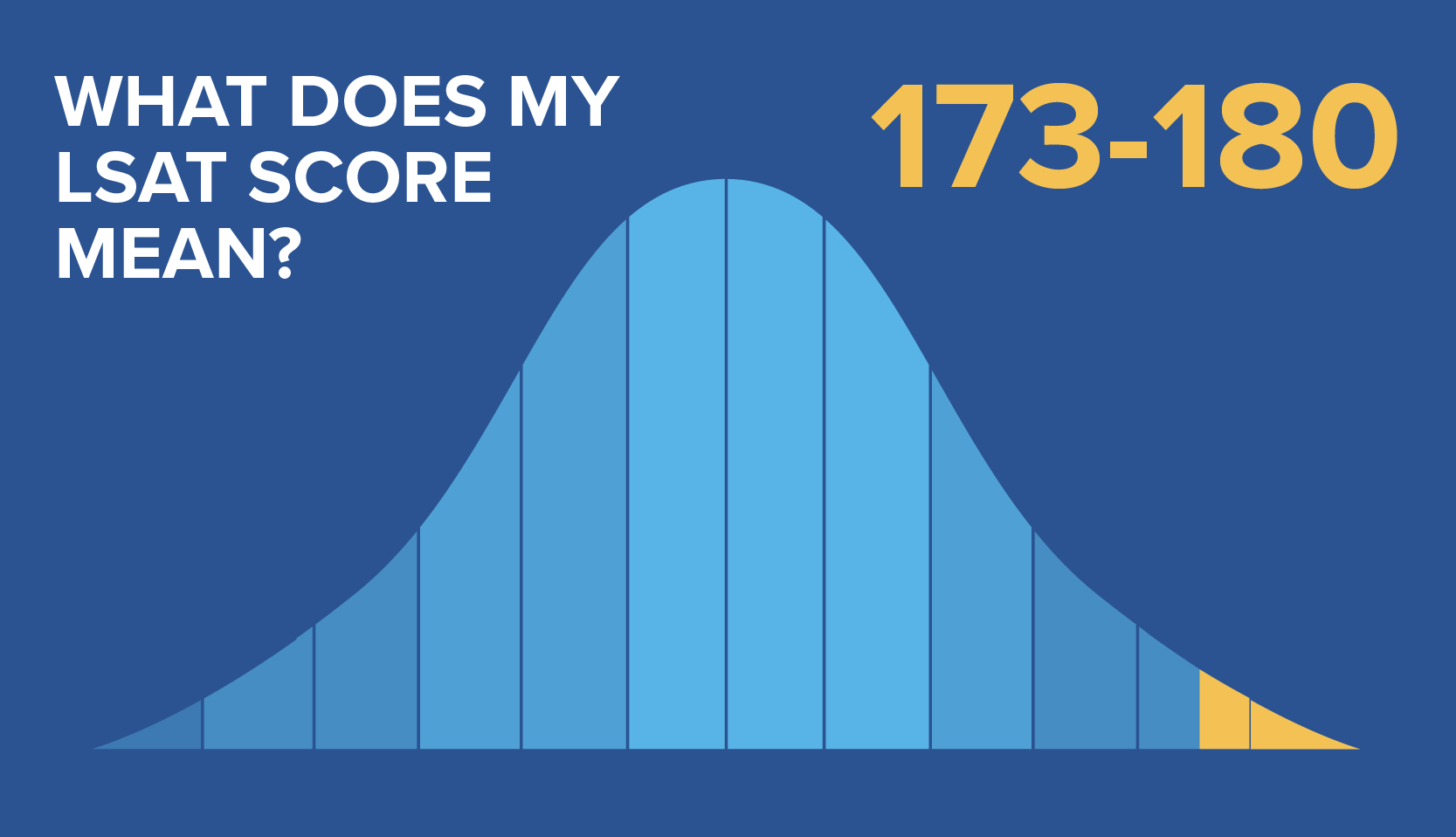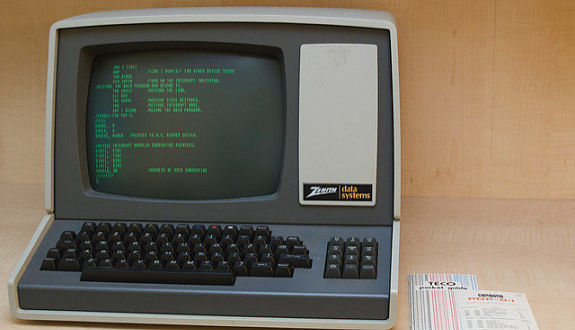
Are you planning on applying to law school within the next couple years? If so, LSAC dropped a bomb for you today. You should probably sit down for this. Or, you know, you can stand but, at the very least, try to grab onto something to stabilize yourself from the unrelenting, explosive power of this news.
The LSAT is going completely digital in September 2019.
In about eleven months, the pencil-and-paper LSAT we’ve known and loved since 1991 will be a thing of the past. In an announcement today, LSAC revealed everyone who signs up for the September 21, 2019 exam will take a digital version of the LSAT, administered through a “tablet devise loaded with patented software.” And every test thereafter will also be administered through a tablet.
That’s right, lawyers of tomorrow: Behold your digital future!
You still here? Yeah, I can tell that the shock of that explosive news sort of blew you away. Your hair’s a little tussled. Your knees buckled. Your eyes have the look of Someone Who Has Seen Something.
It’s pretty crazy news, I know! But LSAC has flirting with the idea of a digital LSAT for years. Over the last year, it began offering pilot programs for test takers to, well, test out the digital format. And just a few months ago LSAC President Kellye Testy promised a digital LSAT by next spring. After years of preparing us for this moment, the LSAT has finally made the leap into the twenty-first century with a digital, screen-based test.
But if you think this means that LSAC will abruptly switch from a paper test to a computerized test in September, then you don’t how incrementally this organization likes to move. To try to smooth the transition from paper to tablet, LSAC’s going to offer the July 15, 2019 exam as both a paper-and-pencil test and a digital test. Except, it sounds like test takers aren’t going to have the chance to pick which version they take. It seems as though LSAC will randomly assign test takers to one of the two versions. I’m not quite sure how this smoothes the transition at all — to me it seems all the more jarring not to know which version of the test you’re going to get — but LSAC assures us that this is “a best practice under educational testing standards for moving to a new testing method.”
Fortunately, mavericks who decide to take the wildcard July 15, 2019 test will have the option to cancel their scores, even after receiving the score. So you can see your score, decide it’s trash, and ask LSAC to incinerate it, so that no law school can ever see it. Essentially, that July test is a freebie. You get to do it, see your score, and then decide whether you want to take it or leave it. Which is a really good deal — such a good deal that even I’m tempted to take this exam, despite having literally no reason to do so.
So, now that we know when the LSAT will go digital, first order of business: If you’re an old school, pencil-and-paper kind of person, it’s imperative that you start preparing for the LSAT. Like, ASAP. There will only be four more LSATs that will definitely be administered as a pencil-and-paper test. We have the fast-approaching November 17, 2018 exam. Then there’s the January 26, 2019 exam; the March 30, 2019 exam; and the June 3, 2019. After that there’s the July 15, 2019 exam, which you might get as a pencil-and-paper test. And then it’s nothing but digital tests ahead.
So if you really have a touch of Luddite tendencies and a really strong preference for a paper exam, you should definitely pick one of these four tests, and get to studying as soon as you can. Even if law school is a ways off for you, it still might make sense to take one of these final paper-and-pencil tests. LSAC will keep your LSAT score on file for five years after you take the exam, giving you the opportunity to get the test out of the way early.
But for those who are intrigued by this digital future, what will the exam going to look like in its digital format? LSAC provided some screenshots of the digital format:
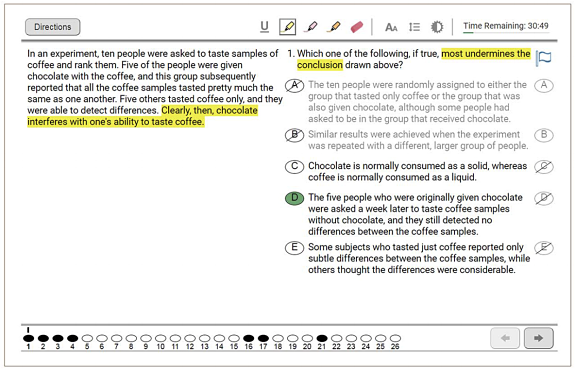
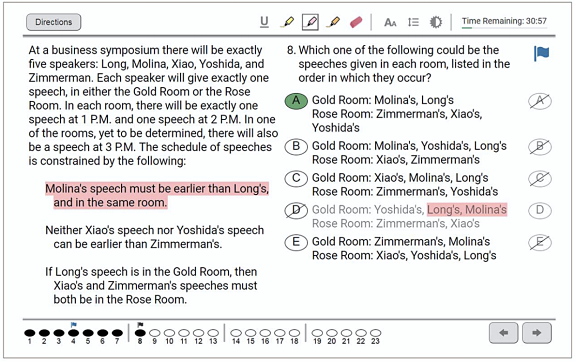
Images courtesy of LSAC
According to Blueprint LSAT instructor Kevin Lin, who took the digital pilot tests in May and October 2017, this is exactly what the format looked like at those pilot tests as well. Kevin had mostly positive things to report about the digital format of the exam when he took the pilot tests. He said the tablets used were “very smooth and user-friendly,” allowing test takers to jump between questions on a given section and flag questions to return to. There were also “plenty of options for text size, line spacing, text contrast to background, and color-blind aids,” according to Kevin.
Also, Kevin noted that the digital version had a 35-minute, digital timer visible during the entire section, making it easier to keep track of the time elapsed than on the paper-and-pencil test, where digital timers are verboten. Kevin reported that another benefit of the digital test was the reduction of noise in the test center: “No more page-turning, no more pencil sounds, no more clock and timer fiddling. A huge plus about this format.”
For the Logic Games section, scratch paper was provided — yet another change from the paper-and-pen test. For Reading Comprehension, there were no longer line numbers in the passages. Instead, when working on a question that would ordinarily refer to a line number, the relevant phrase or sentence would be highlighted. It should be noted, however, that LSAC did not include an image of the Reading Comprehension section today, so it’s possible that it’s still ironing out the details of that section.
How are you going to get prepared for a digital test? Well, one way to do so are the Blueprint classroom and online courses, where the homework has been exclusively digital for a few years now, and students have had the option to take full exams online. Here’s what the digital format of a Logical Reasoning question looks like:
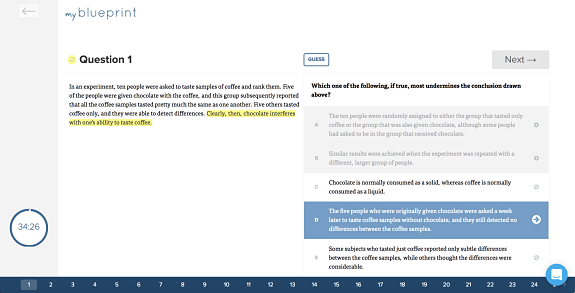
And here’s what our Logic Games format looks like:
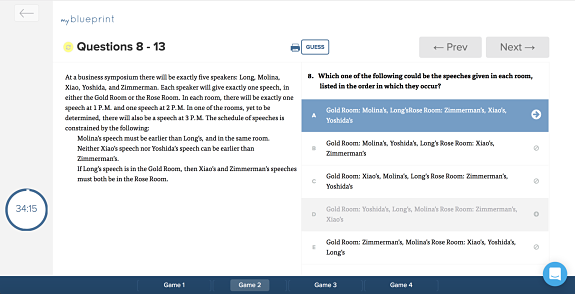
It shouldn’t be a difficult transition to from our format to LSAC’s very similar format.
Finally, in the land of LSAT news, when it rains, it pours. LSAC’s announcement also noted that in the 2019-20 LSAT calendar year (the LSAT “year” starts in June and ends in the July of the following year), there will be nine LSATs administered. That’s up from the six LSATs in the 2018-19 calendar year, and the four per year in all years prior. Here’s the schedule of exams in the 2019-20 calendar:
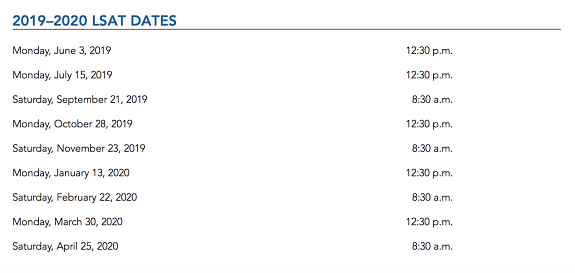
So there are major changes of the LSAT ahead. But no matter what — whether you take the test on paper or a tablet, with a pencil or stylus, in 2018 or 2019 — a good study plan will never fail you. It’ll still be the same, old LSAT concepts, which will always been in style, even when you have to write them out with a stylus.

